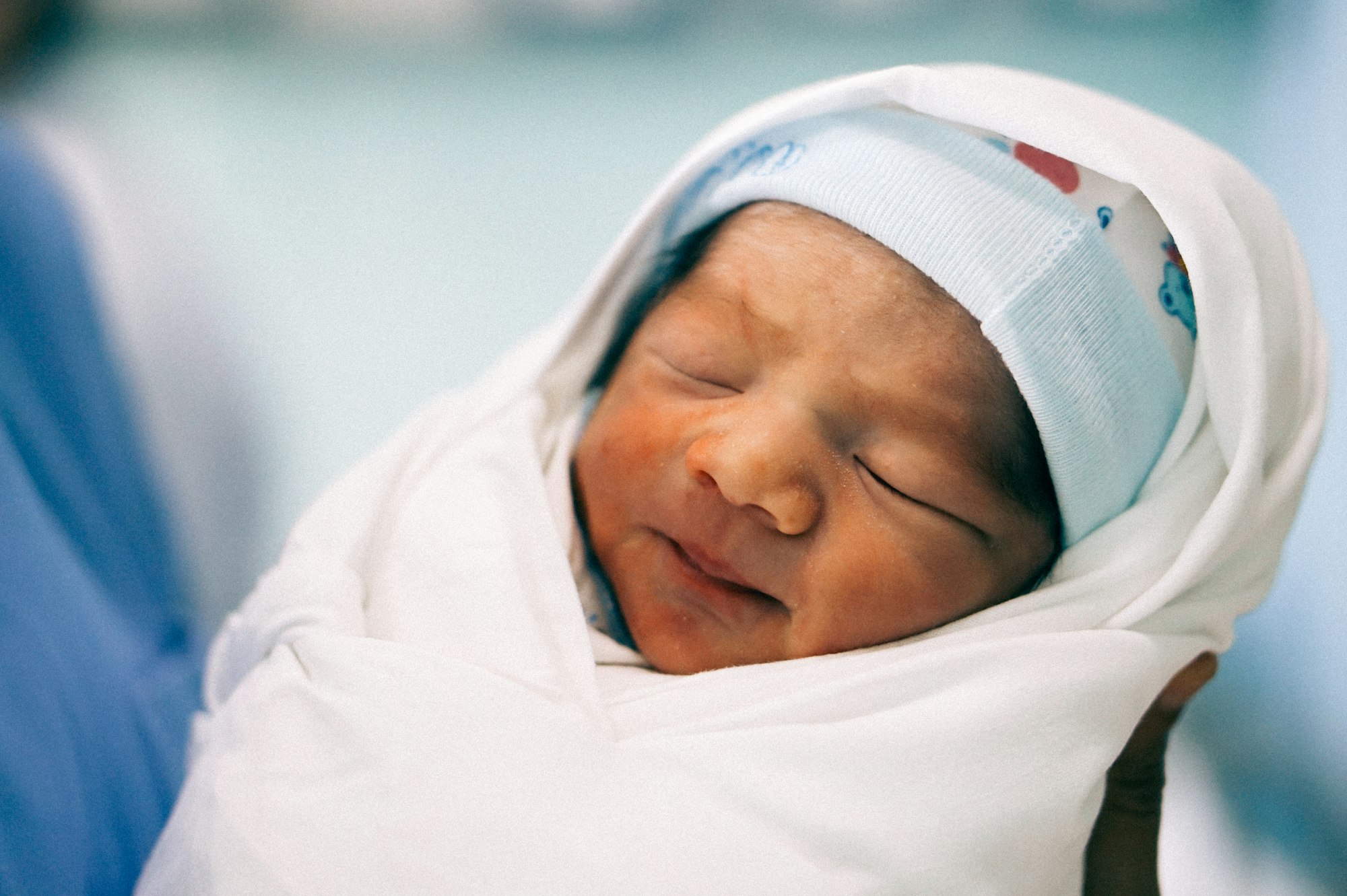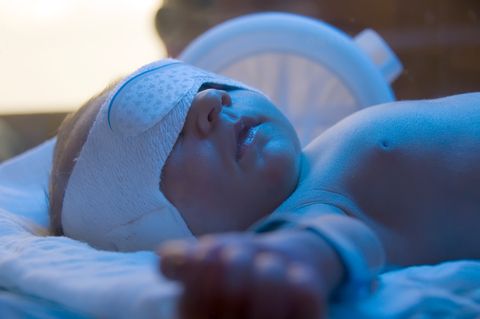Breastfeeding and Jaundice
Jaundice is a very common occurrence; almost all infants have jaundice to a certain degree. Jaundice is diagnosed as a yellowish tint to a baby’s skin. This occurs because of a high percentage of “bilirubin" in the skin tissue.

What is Jaundice?
Jaundice is very common; almost all infants have jaundice to a certain degree. Jaundice is diagnosed as a yellowish tint to a baby’s skin. This occurs because of a high percentage of “bilirubin" in the skin tissue.

Jaundice babies almost always have a common type of jaundice called physiologic jaundice, which is not dangerous. It only becomes a problem when the bilirubin levels rise over a certain level.
Unborn babies need lots of red blood cells to get enough oxygen from a mother’s blood. They don’t need all those additional red blood cells when they are born because they get enough oxygen through breathing.
All the extra blood cells must be broken down and eliminated from a baby’s body. Bilirubin is the by-product formed by the breakdown of these extra blood cells. When a baby’s liver doesn’t get rid of this by-product quickly enough, it causes jaundice. Jaundice is, therefore, even more prevalent in preemies.
Types of Jaundice
- Physiologic jaundice.
~ This is the typical type of jaundice that affects most babies. This type of jaundice usually only lasts about four days.
~ Breastfeeding can help avoid jaundice by ensuring that a baby excretes the bilirubin through stools, as colostrum acts as a laxative, which encourages this process.
~ Phototherapy “Bilirubin Lights" is often used as a treatment; It is a blue light that breaks down the bilirubin in the body, getting it excreted easily. This therapy usually only lasts a day or two. Nowadays, babies can be taken home using a bili-blanket “fiber optic blanket" (photo-therapy lights that wrap around the baby).
- Pathologic Jaundice (abnormal jaundice).
~ In extreme cases, babies may be given blood transfusions if phototherapy is not helpful. If left untreated baby might develop brain damage.
~ Pathologic Jaundice is usually caused by prematurity, stress from a difficult birth, or having a diabetic mother.
~ Mom should continue to breastfeed her baby.
- Late-onset jaundice
~ Usually happens during the second week of a baby’s life
~ It relates to breastfeeding - Caused by a mother’s milk enzymes hampering the breakdown of bilirubin or caused by the fatty acids in a mom’s milk that is being processed more than the bilirubin.
~ Breastfeeding should continue as this type of jaundice cannot harm a baby, and levels will return to normal within two or three months. Most exclusively breastfed babies who are completely healthy and gaining weight well are still jaundiced at 5-6 weeks of life and even later.
- Jaundice is caused by not enough breast milk.
~ A bad latch can cause jaundice. Or a weak suck.
~ A lactation aid can be used if the milk supply is deficient.
~ Learn more about breast milk jaundice here.
- Blood group incompatibility (Rh or ABO problems)
~ This is when a mother’s blood type is different from the baby’s, and her breast milk can start breaking down their red blood cells. This is very rare but can be prevented with an immune injection.
Breastfeeding and jaundice fact - The fastest way to get rid of normal or Pathologic Jaundice is to breastfeed and breastfeed as much as possible.

Tushbaby Hip Carrier
With its ergonomic design and comfortable waistband, Tushbaby provides optimal support for both you and your baby, allowing for bonding on the go. Say goodbye to shoulder and back pain from traditional carriers, as Tushbaby evenly distributes your baby's weight, relieving strain and promoting better posture.
Treat / Prevent Normal Physiologic Jaundice
- Breastfeed your baby as soon as possible so that your baby can get the benefits of colostrum and its laxative properties.
- Do not give your baby water or any other supplements. Bilirubin is excreted in feces and not urine. The more water you give your baby, the less hungry they will be, keeping them from drinking colostrum.
- Breastfeed your baby at least every two hours.
- If for some reason, you cannot breastfeed, you can pump exclusively and use alternative feeding methods until your baby is ready to breastfeed.
- Keep your baby in a room with a lot of natural light. Do not put your baby in direct sunlight, though.
- Do not take medication that contains aspirin and sulfa.
Symptoms to Look Out for That Indicate a Bad Case of Jaundice
- When your baby’s urine turns brown.
- Your baby’s eyes become yellow.
- Your baby has a fever over 37.8° Celsius.
- If your baby starts to act sick or becomes more yellow in skin color.
If your baby is not drinking enough breast milk. - If the baby sleeps more than usual. How to encourage baby to stay awake while breastfeeding.
